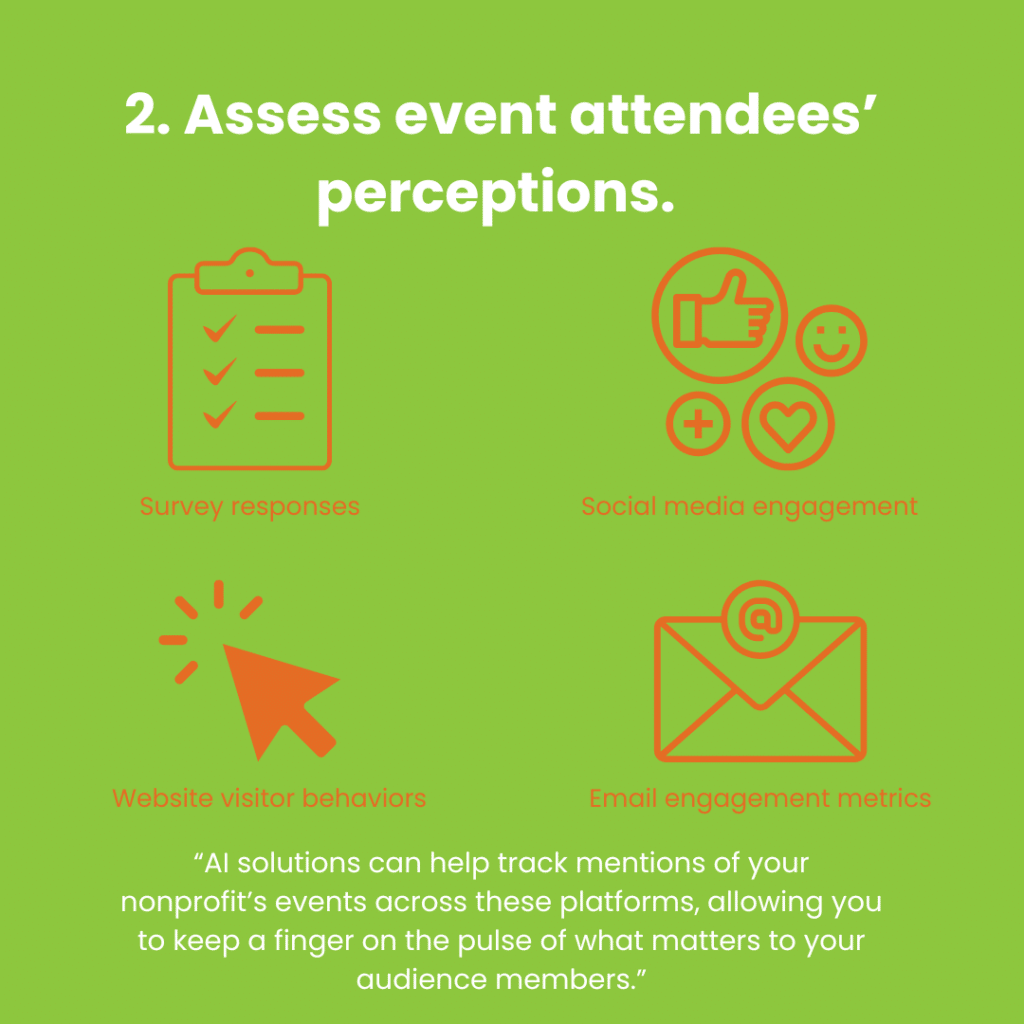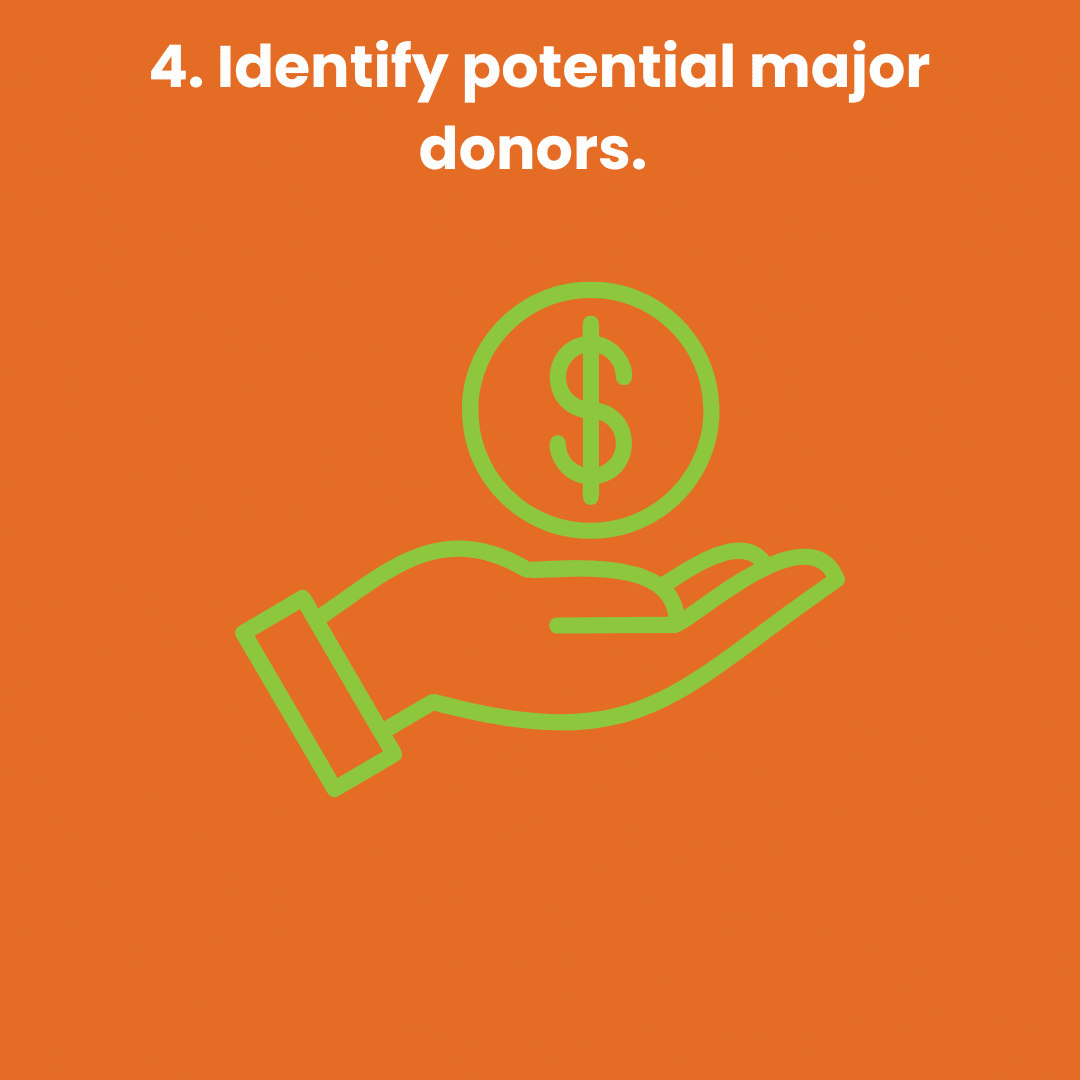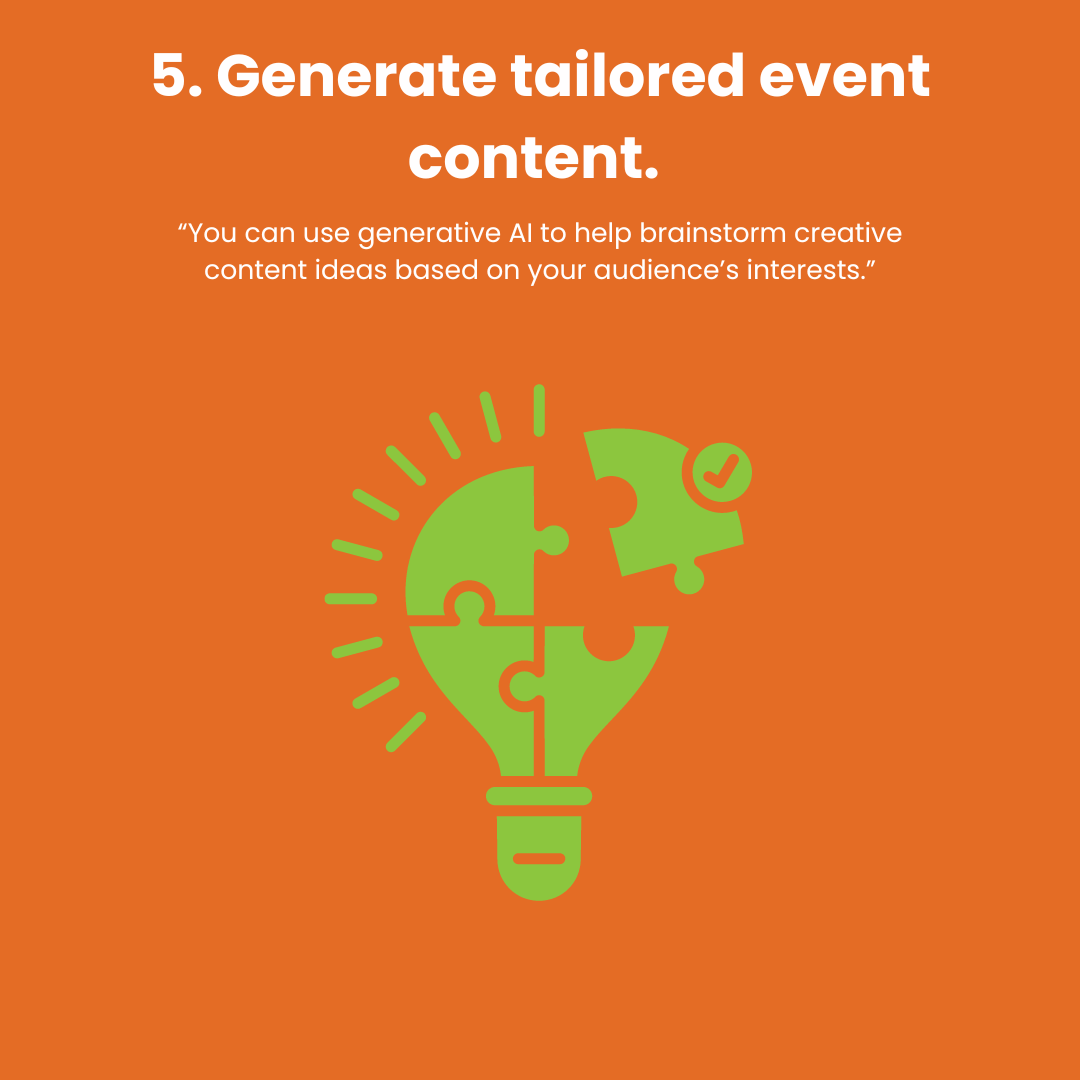5 Tips to Optimize Fundraising Events with AI Insights

By now, you’re probably familiar with the vast potential that AI solutions have to maximize nonprofit fundraising. These tools have been used to automate donor outreach, identify new giving opportunities, and grow fundraising through targeted insights. But did you know that they can also help optimize your nonprofit’s events?
Whether you’re looking to develop an effective event web page or perfect your gala guest list, AI solutions can streamline the event planning process and increase your return on investment (ROI). This guide will explore five tips to use AI insights to level up your fundraising events:
- Set optimal fundraising goals.
- Assess event attendees’ perceptions.
- Map the event attendee journey.
- Identify potential major donors.
- Generate tailored event content.
There are many different AI solutions for nonprofits, but relevant tools for events that we’ll cover in this guide include generative AI solutions (like ChatGPT and DALL-E), data monitoring solutions (including social listening tools), and predictive analytics tools.
1. Set optimal fundraising goals.
Predictive modeling AI solutions assess past fundraising performance and donor behavior to anticipate future fundraising outcomes. You can use these tools to analyze fundraising event results and make more accurate predictions for how your next event will go.
One of the most effective ways to leverage predictive analytics is to use these solutions to set optimized event goals. Having defined goals gives your event planning team a clear target to reach for. Ambitious but achievable goals can also motivate donors to get involved to push your event over the finish line.
Use predictive modeling to set event goals such as:
- An overall fundraising goal
- An event attendance goal
- A sponsorship revenue goal
Predictive AI solutions can assess donors’ past giving behaviors as well as their giving potential to help you set ambitious but reasonable targets for each of these categories.
2. Assess event attendees’ perceptions.
Perception tracking is the process of evaluating supporters’ thoughts and opinions about your nonprofit over multiple platforms, including social media, email, and your website. AI solutions can facilitate perception tracking to help you stay updated on how audience members feel about your organization’s events.
With the help of AI social listening and perception monitoring tools, you can gather the following attendee insights:
- Survey responses, including pre- and post-event feedback surveys
- Social media engagement, such as likes, shares, and comments
- Email engagement metrics, including opens and responses
- Website visitor behaviors, including which pages receive the most engagement
AI solutions can help track mentions of your nonprofit’s events across these platforms, allowing you to keep a finger on the pulse of what matters most to your audience members.
3. Map the event attendee journey.
Supporters need different types of outreach from your nonprofit at different stages of their involvement. According to BWF’s AI fundraising guide, AI solutions can help “manage each step of the donor lifecycle to optimize your nonprofit’s outreach and meet donors at their level.”
Map the attendee journey through the following stages with the help of AI:
-
- Awareness. Before audience members can register for your event, they need to know that it’s happening in the first place. During the awareness phase of the event attendee journey, use social media posts, email newsletters, and blog posts to share your event’s flyer or website landing page.
- How AI insights can help: Leverage AI tools to evaluate past marketing performance and choose the optimal channel to spread awareness. For example, compare relative engagement levels across different social media platforms to choose the right channel to share event information.
- Research. In the research phase, supporters will head to your nonprofit’s website to learn more about the event and assess whether it fits their interests. To support this stage of the journey, provide a robust event information page with the when, where, and why of your event.
- How AI insights can help: You can serve different versions of your event information page to different audiences based on their interests. For example, users who have expressed interest in your nonprofit’s youth programs can receive a version of the event information page with a prominent description of how the event supports those programs.
- Awareness. Before audience members can register for your event, they need to know that it’s happening in the first place. During the awareness phase of the event attendee journey, use social media posts, email newsletters, and blog posts to share your event’s flyer or website landing page.
- Decision. After reviewing your event’s details, supporters will decide whether they want to attend. Providing a user-friendly, convenient online registration form will help facilitate more registrations.
-
- How AI insights can help: You can use AI tools to track event attendee demographics and understand who is signing up for your event. You can adjust your outreach strategy if you want to reach a certain audience more effectively.
You can also use this approach to map supporter journeys for other audiences, such as event sponsors. Potential sponsors will go through a similar journey of learning about your cause, looking into your event, and deciding whether they want to contribute funds to the experience.
4. Identify potential major donors.
One of the most common uses of nonprofit AI technologies is prospect research. Prospect research is the process of screening your donor database to identify potential major donors who have the capacity and willingness to contribute larger gifts.
Double the Donation’s prospect research guide highlights the following factors to look for when identifying prospective major donors:
- Past donation history
- Past interactions, such as event attendance or volunteering
- Wealth markers, including net worth, income, and property information
- Business affiliations
If you’re missing any supporter information, you can run a data append to supplement your internal database with third-party data.
Then, you can use prospect research to identify potential major donors to personally invite to your event. Send a handwritten invitation or give them a call.
Make a point to engage with these donors one-on-one during the event. Thank them for coming, catch up with them, and schedule a follow-up meeting after the event. For example, you can ask, “Are you free to meet with our development director next week to chat about your charitable goals for the year?” Try to set a meeting time on the spot to keep your nonprofit at the forefront of potential donors’ minds.
5. Generate tailored event content.
Using a combination of AI predictive analytics and social listening tools, you can understand what marketing content your audience responds best to. Then, you can tailor your event promotional materials to match supporters’ preferences. Plus, you can use generative AI solutions to help brainstorm creative content ideas based on your audience’s interests.
With the help of these tools, you can generate ideas for content used before, during, and after your event. Pre-event marketing materials include:
- Social media posts
- Promotional emails
- Blog posts
You can also generate content ideas for your event itself, such as:
- Speakers
- Small group discussion topics
- Event entertainment
- Q&A sessions
After your event, you can follow up with participants through:
- Event donor thank-you letters
- Recap blog posts
By leveraging AI solutions, you can more accurately predict which types of marketing messages, visuals, and educational content your audience will be interested in. This can greatly increase engagement surrounding your event marketing materials, leading to higher interest and participation in your event, as well as increased involvement after the fact.
As you can see, AI solutions can help you increase your event’s ROI by helping you make data-driven decisions based on what you already know to be true about your audience. These tools can help not only increase event-planning efficiency but also allow you to plan experiences that exceed supporters’ expectations and lead to increased support for your mission.
Guest Author Bio: James Barnard, Associate Managing Vice President of Annual Giving and Digital Marketing at BWF
James an integral part of the team at the global fundraising consultancy BWF. He helps nonprofit clients develop digital strategies for fundraising and marketing. James has been active in CASE for a number of years, participating as a conference speaker and CASE District II board member.



